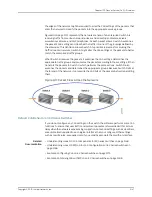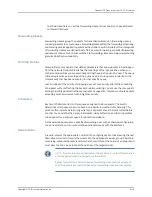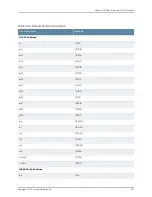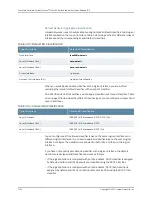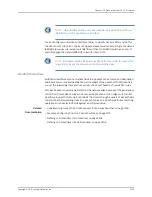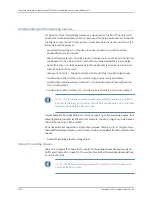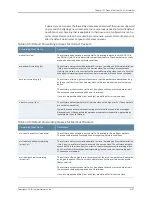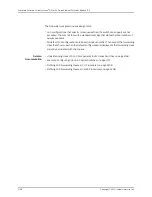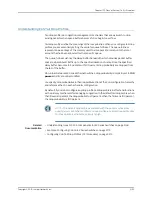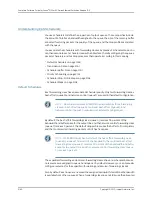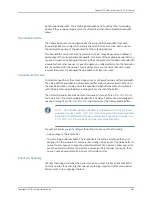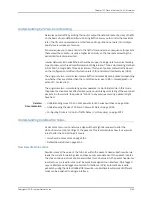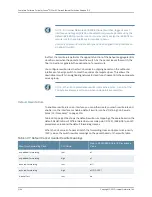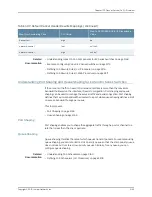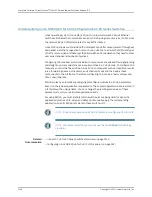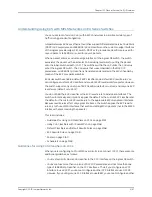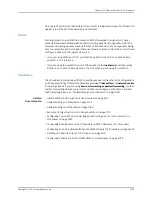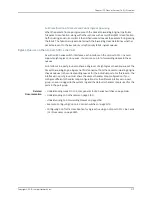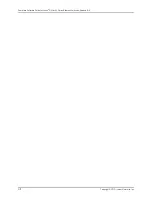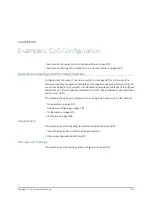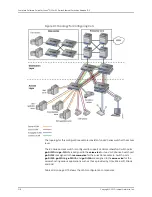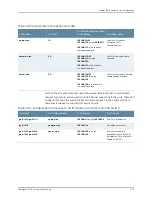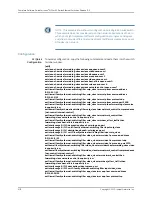
transmission bandwidth, the remaining bandwidth can be used by other forwarding
classes if they receive a larger amount of offered load than their allocated bandwidth
allows.
Transmission Rate
The transmission-rate control determines the actual traffic bandwidth from each
forwarding class you configure. The rate is specified in bits per second. Each queue is
allocated some portion of the bandwidth of the outgoing interface.
This bandwidth amount can be a fixed value, such as 1 megabit per second (Mbps), a
percentage of the total available bandwidth, or the rest of the available bandwidth. You
can allow transmission bandwidth to exceed the configured rate if additional bandwidth
is available from other queues. In case of congestion, configured amount of transmission
rate is guaranteed for the queue. This property allows you to ensure that each queue
receives the amount of bandwidth appropriate to its level of service.
Scheduler Buffer Size
To control congestion at the output stage, you can configure the delay-buffer bandwidth.
The delay-buffer bandwidth provides packet buffer space to absorb burst traffic up to
the specified duration of delay. Once the specified delay buffer becomes full, packets
with 100 percent drop probability are dropped from the tail of the buffer.
The default scheduler transmission rate for queues 0 through 7 are 95, 0, 0, 0, 0, 0, 0,
and 5 percent of the total available bandwidth. The default buffer-size percentages for
queues 0 through 7 are 95, 0, 0, 0, 0, 0, 0, and 5 percent of the total available buffer.
NOTE:
On EX8200 switches, the default scheduler transmission rates for
queues 0 through 7 are 75, 0, 20, 0, 0, 0, 0, and 5 percent of the total available
bandwidth. The default buffer-size percentages for queues 0 through 7 are
75, 0, 20, 0, 0, 0, 0, and 5 percent of the total available buffer.
For each scheduler, you can configure the buffer size as one of the following:
•
A percentage of the total buffer.
•
The remaining buffer available. The remainder is the buffer percentage that is not
assigned to other queues. For example, if you assign 40 percent of the delay buffer to
queue 0, allow queue 2 to keep the default allotment of 20 percent, allow queue 7 to
keep the default allotment of 5 percent, and assign the remainder to queue 3, then
queue 3 uses approximately 35 percent of the delay buffer.
Priority Scheduling
Priority scheduling determines the order in which an output interface transmits traffic
from the queues, thus ensuring that queues containing important traffic are provided
better access to the outgoing interface.
3161
Copyright © 2010, Juniper Networks, Inc.
Chapter 107: Class of Service (CoS)—Overview
Summary of Contents for JUNOS OS 10.3 - SOFTWARE
Page 325: ...CHAPTER 17 Operational Mode Commands for System Setup 229 Copyright 2010 Juniper Networks Inc ...
Page 1323: ...CHAPTER 56 Operational Mode Commands for Interfaces 1227 Copyright 2010 Juniper Networks Inc ...
Page 2841: ...CHAPTER 86 Operational Commands for 802 1X 2745 Copyright 2010 Juniper Networks Inc ...
Page 3367: ...CHAPTER 113 Operational Mode Commands for CoS 3271 Copyright 2010 Juniper Networks Inc ...
Page 3435: ...CHAPTER 120 Operational Mode Commands for PoE 3339 Copyright 2010 Juniper Networks Inc ...
Page 3529: ...CHAPTER 126 Operational Mode Commands for MPLS 3433 Copyright 2010 Juniper Networks Inc ...

